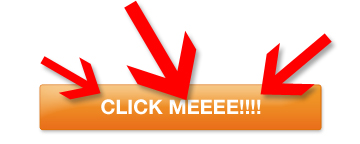How to create links and buttons on your landing page templates that users want to click
 There is not a more common problem with landing page marketing than designers who can’t take a user from the story to the sale.
There is not a more common problem with landing page marketing than designers who can’t take a user from the story to the sale.
Links and buttons are the vehicles that allow a prospect to navigate your landing page. Your objective should be to make them as easy as possible to understand and use.
Regardless of how long your sales letter landing page is, or how many “order” buttons you embed in the copy, clicking on the link or button should bring the user to a simple, easy-to-follow order page. Too many order options for too many offers and products can be confusing. And the confused mind always says “No!”
When you want to avoid confusion and take the user directly from your sales pitch to a sale (or email collection form), make sure your landing page passes this checklist:
1. The landing page includes well-designed button on landing screen.
Order buttons may be the most fickle, but convincing item on a landing page. The difference in color or copy can either convince or turn away a potential customer or email subscriber.
“Well-designed” is simply defined here as being understandable. They should look like a button and act like a button. They should have a roll-over state when someone puts the mouse on it, and the copy on the button should tell the user exactly what is about to happen.
Just like in a shopping cart where you hit the “checkout” button, the user should know if a button will bring them to “learn more” or if the button brings them directly to a payment gateway.
2. The landing page includes a well-designed button in closing.
The same can be said here, however this is where it really counts. Without a solid button on the page where someone checks out, you won’t get any sales. If someone is bored of clicking through order pages, they’re likely to abandon here if they think they’re being taken to yet another page.
Be clear when the transaction is about to be over, and when it’s actually over. Test every button on your landing pages with A/B tests until you find a clear winner. We always think we know what converts best, and A/B tests will almost always tell us how completely wrong our instincts are.
[text_ad]
3. The landing page uses blue, underlined text links when something is supposed to be clicked.
This might sound old fashioned, but hyperlinks are still meant to be blue. Not that it’s a problem for websites who adapt their stylesheets to match the theme of their sites, it just becomes a problem on landing pages.
Some landing pages are so over-designed that the hyperlink blends into the background. How many high-converting landing pages do you still find out there who are underlining text in order to make a point stand out?
So how is a user supposed to tell the difference between your underline that shows emphasis, and an underline that they’re supposed to click on?
Blue is still the most highly recognized color for a hyperlink, which is why if you must hyperlink words on a page, you’re best off sticking with the one people know to click on.
4. The landing page links and buttons are contextual.
Asking for someone to click a button before they even know what they’re clicking isn’t a strategy that works for most websites. But if you write “there are vital secrets about this product on the next page” on a button, you can probably get most people to click it.
This is why the copy on your landing page buttons are incredibly important. When someone reads your button, it should tell them what they’re getting. “Click here” is such a vague phrase that has been proven over and over again to be the least likely to convert a visitor into something more.
By writing something more convincing like, “Yes, I want to download my free report” or “Yes, I’m ready to start making more money online”, you’re not only exciting the user, but you’re letting them decide whether or not they’re ready for the next step. Even “subscribe now” is informative enough to tell the user exactly what they’re about to do.
The buttons on your website are what stand between you and a transaction. An offer for a free product needs to assure the user that the transaction is instant. A button for a paid product needs to assure the user that what they’re about to purchase is awesome.
Sounds simple right? Try looking at your landing page buttons now. When someone looks at them, would they know exactly what will happen when they click?


